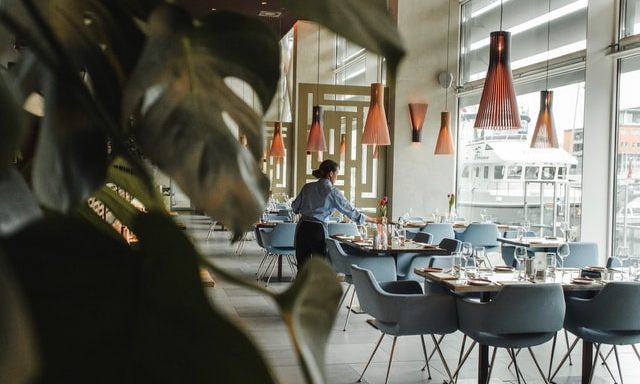Pay increases: A balancing act
With the industry in need of attracting and retaining staff, hospitality is issuing record pay rises. Yet as the sector is enduring significant costs itself, it needs to consider ways to offset this investment.

Register to get 1 free article
Reveal the article below by registering for our email newsletter.
Want unlimited access? View Plans
Already have an account? Sign in
“While the pandemic has impacted all industries, few have had to overcome ‘harder’ or ‘more numerous blows’ than the hospitality sector,” as evident from Peckwater Brands latest research. Whilst many challenges continue to hinder the industry today – it has decided to award “record” pay rises in a bid to tackle one of its most long-standing contentions; the decline in workforce.
Latest figures from the Office for National Statistics underlines the severity of staffing shortages in hospitality at present, reporting a 700% rise in job vacancies from November 2021 to January 2022 versus the same period a year ago. The report correspondingly indicates that vacancies per 100 employee jobs have risen to 7.9 for the sector – the highest in any industry recorded – yet since the appetite for dining out has “not faltered” this is generating angst within the sector that should vacancies persist to rise, some restaurants will undoubtedly struggle to stay competitive.
Although businesses are in the midst of urging the Government to introduce schemes similar to those that were set in motion at the beginning of the pandemic, Martin urges that firms within the sector will need to take it upon themselves to “adapt if they want to survive” – and the employment of “sharp” pay increases should prove a step in the right direction – but if hospitality has had to continually endure retention issues, especially ‘post-pandemic’, why are firms only now applying substantial wage increases?
“I think it’s a pretty simple one,” says Jonathon Boys, labour market economist for the Chartered Institute of Personnel and Development (CIPD). “It’s just supply and demand – the demand for candidates is huge, and the supply is small.”
Boys is the lead market economist at CIPD, the professional trade body for human resources. He has spent the last 10 years researching “various” angles of the labour market and in this time devoted two years studying pay for trade unions and a further job centred around economic productivity. Boys is now responsible for the economic commentary at CIPD – essentially collating data that reveals the present state of the world. With a broad set of knowledge in different fields of the market, Boys accredits the instability of workforce supply and demand to both the economy reopening “very quickly” and employment being “significantly low.”
“There are less people looking for work who don’t have work”, referring to the drop in the unemployed per job vacancy – and so those actively searching for work – from four people unemployed per one job vacancy to now only one per vacancy. “Quite a few people have dropped out and not come back in. Some of it is immigrant workers returning to their home countries but a lot of it is older workers exiting from the labour market a bit early.” He discloses this is all “pent up” churn and turnover that didn’t happen during Covid – “it is the only real way to get progression and a pay bump. Employees that missed out on pay awards for almost two years are now chasing it.”
The economist also alludes to price rises causing “a perfect storm” for the industry at present. “All businesses face it. In a way, they’re all in the same boat.” Yet just because there is increased pressure for hospitality to provision pay rises, “does not mean it is better able to afford it,” he stresses. “Usually, you’re looking for some sort of economic growth, some sort of productivity improvement, something that gives the business a better propensity to actually pay more.” However, that is not the case here. This contention will demand hospitality to strike a manageable balance between the necessity to retain staff and ensuring low costs – especially with the looming VAT restoration.
The question that now needs to be asked is how can firms diminish their outgoings in other areas to provide for these pay increases? One way Boys alludes to could be the placement of costs onto consumers through price rises.
“If you have a premium service in products, then perhaps you can charge more, but only if you’ve got that market power to do so.” Firms may take comfort in the fact however, that price rises for consumers are “inevitable ‘across’ the sector” – as announced recently by trade body UK Hospitality – proposing that unless customers refrain from dining-out entirely, the sector should be able to mitigate at least some of its costs. Recent research from UK-based Lightspeed hospitality merchants shows that consumers do not plan on discontinuing dining-out anytime soon, revealing a 53% growth during 2021, despite “challenging conditions”, with the fine dining sub-sector seeing a 212% increase. Yet “if you’ve got commercial pressures and people’s incomes are squeezed,” which we may see as result of the expected surge in inflation – “they will simply substitute dining-out with staying in,” states Boys.
This method is fairly disputed because it brings with it a plain contention: “People just won’t go to the pub anymore.” Certain products and services are “fairly inelastic”, for instance “toothpaste and petrol” – “people will carry on brushing their teeth and driving a car.” Whereas with discretionary spending, such as going out to eat, people do not necessarily need to do that: “You can eat at home which is an easy substitute that consumers can save on.” So if firms are discouraged to position price increases onto consumers, what further affordable solutions can they employ? Some would advise increasing the use of automation.
According to research by US accounting firm McKinsey and Company, 45% of jobs people are paid to do can be automated by making changes to technology that is “already available”. User Platform Deputy, cites the appetite for automation in the sector, displaying it is already being utilised to replace both “front-of-house and back-of-house tasks”, for instance, ordering food and making payments, scheduling employees, training employees and automating menus. The platform studied the case of restaurant Spyce as evidence of its success. The catering firm stated that, as undergraduates, “they could not pay high prices for every meal” and as a result, it discovered that there are a number of people who want to eat healthily but are “priced out” of quality food. Spyce is described as the “intersection between technology and hospitality” and by mixing properly sourced ingredients with its “robotic” kitchen, the restaurant is now able to produce healthy meals at affordable prices.
Automation is awarded for its accuracy, cost savings and driving efficiency, according to Deputy. Less mistakes are certain and automated restaurants can capitalise on the “decreasing cost of technology to offset the rise in paying employee wages.” Yet automation correspondingly has its drawbacks. Deputy found this in the case of restaurant Eatsa. Unlike Spyce, the food at Eatsa was prepared by people, however the automated restaurant proved “too much” for consumers and consequently closed all five sites. The company’s blog stated that it “expanded its retail footprint too quickly,” suggesting that transitioning to a greater use of automation takes time – which some restaurants in the present climate may not have. Automation yields further contentions such as “a lack of emotional connection and the inability to solve complicated issues”, whilst also demanding surplus costs to incorporate areas of automation into restaurants – Spyce had to raise an initial capital of £19m to fund its automated service. If restaurants are looking to instantly lower their costs, this method may be less appetising.
An additional course of action could simply be to scout for new suppliers. Whilst maintaining a strong relationship with current suppliers is “critical”, cited by publication Hotel Management, “rotating in new items can quickly and dramatically reduce your costs.” Restaurants need to be careful however to not discontinue the products “its customers love,” as these items may be too crucial to the firm’s revenue to warrant change, says Laura-Andreea Voicu, hospitality content writer, cited by platform Gloria Food. Alternatively she proposes streamlining menus to save on costs, both through reducing the likelihood of waste – and so misspent capital – and lowering food costs. “This will improve efficiency in the kitchen and inventory management, and will also provide customers with more high-quality meals in less time.” Of course restaurants could abstain from increasing wages full-stop, yet this is largely discouraged due to the already low appetite to work in the sector – but why?
“It is fairly immune to home and hybrid working. If you physically need to be present for food preparation, that’s something hospitality can’t offer,” Boys disputes.
Reed’s latest research shows almost half (45%) of non-hybrid employees state they are considering leaving their job in preference to hybrid working, with 35% disclosing they require a better work-life balance – which could theoretically be solved by employing a hybrid working model. The institute underlines that businesses will have to pay more to attract employees, otherwise they will lose them to competitors. Raphael Herzog, chair of the Bristol Hospitality association (BHA) strengthens CIPD’s ultimatum, suggesting “it is very competitive” at the moment and “a lot of work needs to be done in terms of attracting people to work in the industry.”
Hospitality is having to perform a bit of a balancing act currently. The need to retain and attract staff is pressuring firms to award record pay rises, yet the sector needs to be careful to control its costs. With Opsbase displaying 71% of hospitality workers naming ‘better pay’ as a principal reason to stay in the industry, “it has no choice in the matter,” states Herzog. There may be a light at the end of the tunnel however, should the sector be able to offset this cost.
Transferring the cost onto consumers in the form of price rises may be in favour since it is already inevitable across the landscape, yet it is often “very difficult” to sustain, Boys contends and often comes at the expense of losing custom. “There are other solutions that are not particularly costly but they just require a bit of imagination,” such as the proposal of implementing technology. Not only could employing automated services cease this cost altogether by lowering labour, it also assures precise measurements in food preparation, whilst improving customer service by lessening mistakes made. Yet restaurants who have the financial capital to do so may be the only firm’s to capitalise on this opportunity and since it is quite time consuming, it may not be an employable solution at present. Further economical alternatives include looking for more affordable suppliers and streamlining menus. By offering in-season foods, restaurants should be able to obtain ingredients at a lower price – but similarly – restaurants will need to ensure this does not discourage custom.
Boys alludes to a simple dispute however, that “not all firms are able to raise pay.” It may be that we see the sector alternatively develop more novel and economical ways to attract new talent, in preference of issuing wage increases. “They’ve got skill shortages, they need to start looking at groups that they’ve not traditionally employed from, and one of them is older workers.” The economist proposes the sector needs to design jobs that “really work for different people. It’s all about preferences” – such as “increased flexible working” for those of an older age – it’s got to think about the “full spectrum” of things that people value, “the total remuneration package, not just pay.”







